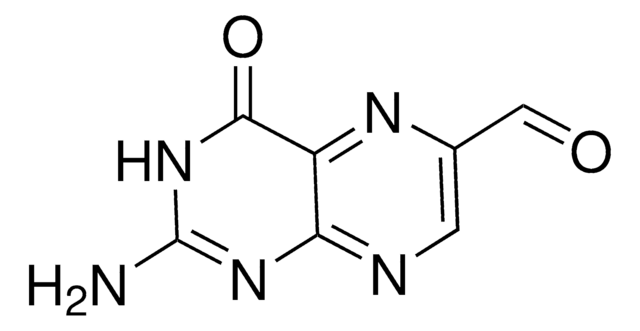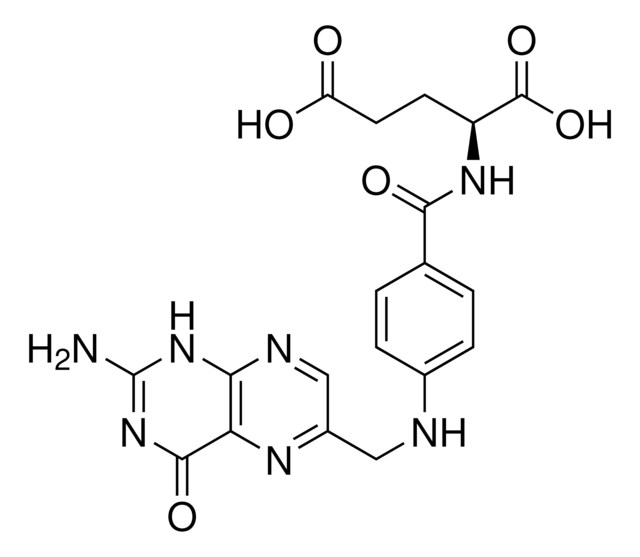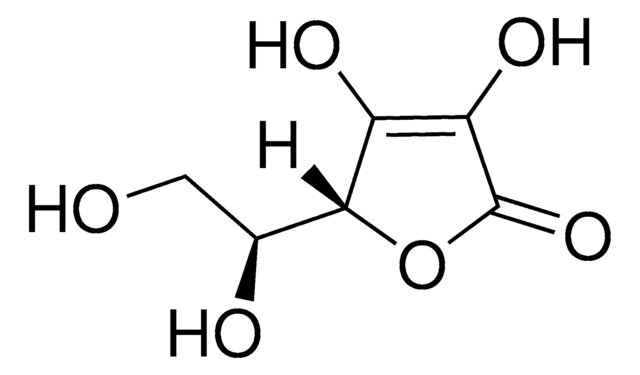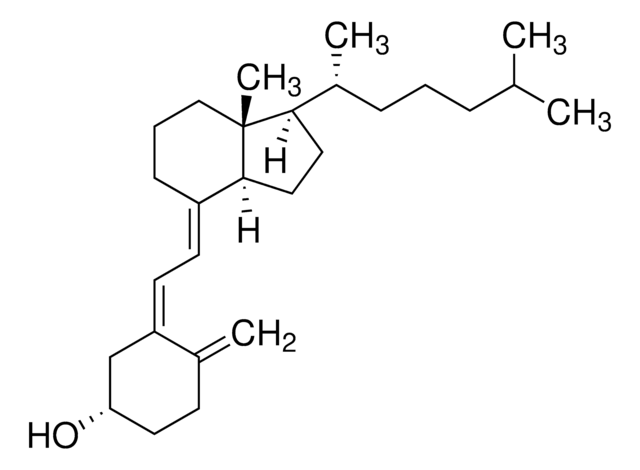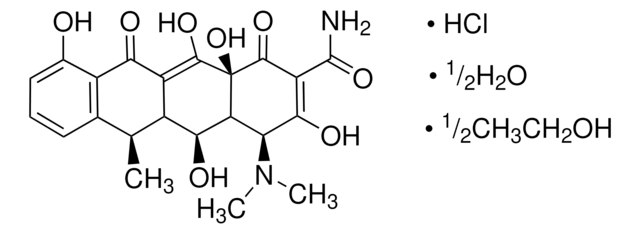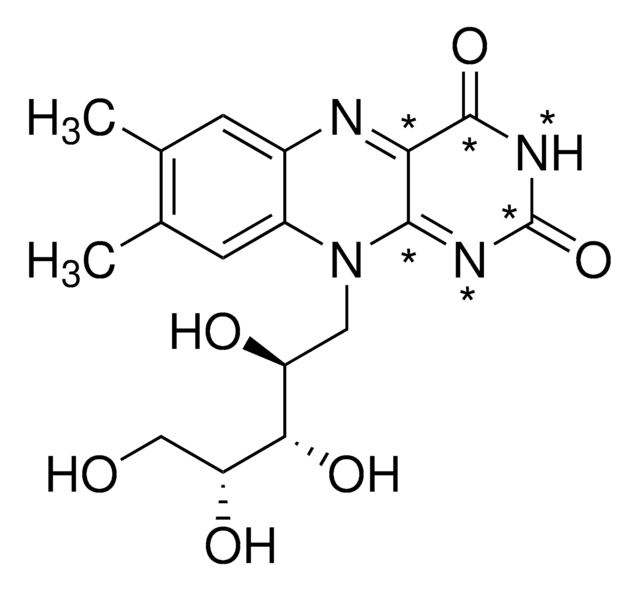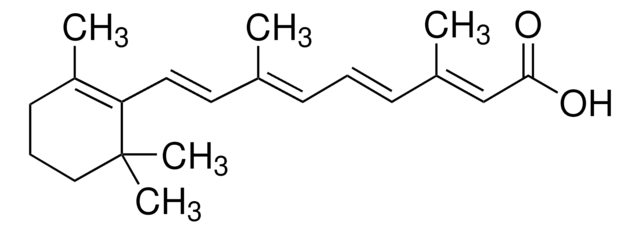SMB01333
Acetyl-6-formylpterin
≥95% (HPLC)
Synonym(s):
2-Acetamido-4-oxopteridine-6-carboxaldehyde, 2-Acetamido-6-formylpteridin-4(3H)-one, 2-Acetylamino-4-hydroxy-6-formylpteridine, 2-Acetamido-6-formylpteridin-4-one, N-(6-formyl-4-hydroxy-2-pteridinyl)acetamide, N-(6-formyl-4-oxo-1H-pteridin-2-yl)acetamide
About This Item
Recommended Products
Quality Level
Assay
≥95% (HPLC)
form
powder
storage temp.
−20°C
SMILES string
CC(=O)NC1=NC2=NC=C(N=C2C(=O)N1)C=O
InChI
1S/C9H7N5O3/c1-4(16)11-9-13-7-6(8(17)14-9)12-5(3-15)2-10-7/h2-3H,1H3,(H2,10,11,13,14,16,17)
InChI key
DDBCPKAHJKOGKK-UHFFFAOYSA-N
Looking for similar products? Visit Product Comparison Guide
General description
Moreover, acetyl-6-formylpterin serves as a precursor in the synthesis of 2′-hydroxy-7,8-dihydrofolate, a metabolite associated with para-aminosalicylic acid (PAS) in M. tuberculosis. This compound′s versatility and involvement in various biological processes make it an intriguing molecule for metabolomics and biochemical research.
Application
- to study the potential reversal of iver fibrosis
- in metabolomics research
Biochem/physiol Actions
Features and Benefits
- Can be used in Metabolomics and Biochemical research
- High-quality compound suitable for multiple research applications
Other Notes
Storage Class Code
11 - Combustible Solids
WGK
WGK 3
Flash Point(F)
Not applicable
Flash Point(C)
Not applicable
Choose from one of the most recent versions:
Certificates of Analysis (COA)
It looks like we've run into a problem, but you can still download Certificates of Analysis from our Documents section.
If you need assistance, please contact Customer Support.
Already Own This Product?
Find documentation for the products that you have recently purchased in the Document Library.
Our team of scientists has experience in all areas of research including Life Science, Material Science, Chemical Synthesis, Chromatography, Analytical and many others.
Contact Technical Service